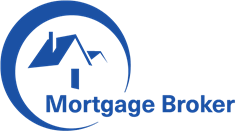How to Get a Mortgage
Mortgage is a loan to buy real estate, like a house. You typically sign a mortgage contract, called a deed of trust or promissory note, promising to pay the lender back with interest over time. The lender’s rights to the property remain until it is paid off in full, and in some cases, if the borrower doesn’t pay the debt, the lender can reclaim the property through the foreclosure process.
The modern mortgage is a descendant of a common law practice that emerged in England during the Middle Ages. The debtor conveyed ownership of land to the creditor with the promise that the land would revert to the debtor when the debtor paid off the debt in a certain amount of time. This arrangement allowed farmers who couldn’t afford to purchase the land outright to use it for their livelihoods.
How to Get a Mortgage
The mortgage process can seem overwhelming, especially when it comes to filling out an application. But you can simplify the process by ensuring you’re working with lenders that have excellent customer support. You’ll want to choose a lender that offers both online and in-person support, so you can ask questions if needed. PNC Bank, for example, has local branches and online applications that let you work at your own pace, while also offering live support via phone or chat.
It’s also a good idea to be familiar with the types of mortgages available, as well as how much you can afford to spend on your home. This will help you find the right lender and the best mortgage rate for your situation. You’ll need to provide a number of documents when applying for a mortgage, including two months of bank statements, to show where you’re getting the funds to cover your down payment and other closing costs. You’ll also need to provide your credit report and, if you’re self-employed, tax returns for the past three years.
Once your mortgage application is approved, you’ll meet with an underwriter to go over the details of your agreement. They’ll look at factors like your income, loan-to-value ratio and credit score to ensure you can afford the monthly payments on the mortgage. They’ll also check the title of your new home to make sure there aren’t any liens against it from other creditors. If any liens are found, they may require you to pay an extra charge as part of your closing costs.
At the end of the mortgage process, you’ll receive a federally required form called the Closing Disclosure that shows all final and detailed costs related to your mortgage. This includes the mortgage loan, interest rate, fees and taxes. The lender must send this form at least three days before your scheduled closing date. Then you can sign the document and officially own your new home!
